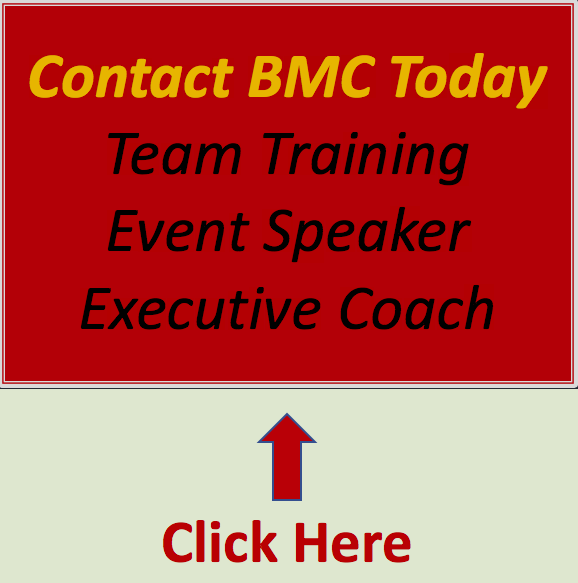Advice to build an inspiring corporate culture that energizes your corporate strategy.
/Advice to build an inspiring corporate culture that energizes your corporate strategy.
A first step to building an inspiring corporate culture that energizes your corporate strategy (if there ever is a first step), is to be comfortable that corporate culture and corporate strategy are two very different things that enjoy a symbiotic relationship.
Corporate Strategy answers the question, “What do we do?” It offers direction for employees to follow by defining goals and objectives. It is the Vision and Mission of the company. Strategy is tactile and easily measured using accounting tools like Net Income, Return-on-Investment (ROI), Sales Growth and Net-Conversation Rates.
Corporate Culture answers the questions, “How do we do it?” and “Why do we do it?” It encompasses energy and passion, fuelling excitement that employees, clients and suppliers will give to the corporate strategy (and feel from the corporate strategy). Corporate culture defines whether the journey is exciting, gratifying, sustainable and something to be proud of, or a lack of culture (or a negative culture) can make the exact same work discouraging, repetitive and exhausting.
A strong corporate culture rallies people behind the strategy and can quite literally drive exponential success. But, strategy with a mediocre culture will never reach its full potential.
Being Intentional Matters
Having an intentional corporate culture is like being part of a great orchestra with many musicians committed to playing the same music at the same time at the same tempo. Sure, the string section will be playing one aspect of the concert (finance), the wind section will be playing another (production), the horns will be playing another (sales) and the percussion will be playing yet another (marketing), but together they are all excited to bring their best to a shared goal.
When a team have shared commitment and trusted leadership to guide them along the path of vision, mission and values they become high-functioning / high-value and their individual expertise shines. Staying with the example of the orchestra, if the musicians didn’t have a shared goal and a conductor they trust, their efforts would almost always be disorganized with a risk of chaos. Alternatively, working together they can all bring their unique expertise and experience to the project and create beautiful music.
Leadership Responsibility
Supporting the corporate strategy and corporate culture are two of the most important responsibilities of a leader.
As I said earlier, strategy and culture should live in balance – a symbiotic relationship. This balance should guide and align everyone’s actions and decisions whether they are collaborating as a team of 10 people or are working on their own. And while the company will have one overarching culture, great leaders know that within the company many micro-cultures will likely exist. For example, the legal department will likely have a strong sense of policy and structure while the R&D and marketing departments will likely have far more creativity and agility. But even with these differences, all employees should still experience work that is exciting, gratifying, sustainable and something to be proud of.
How you and I experience culture is always changing. Every new person on your team or in your working group will add a bit of their own flavour as they share into your corporate culture. Over time, as your company / industry changes your corporate culture will adjust a bit as well. Every company and every team will have a unique culture; you will never be able to duplicate the culture somewhere else, but that is OK just create a new great culture. So, embrace what you are experiencing but don’t hold on too tightly – expect it to change and let it change.
A word of caution; many companies move the responsibility for corporate culture to their HR team. There are real challenges with this. Sure, HR should be involved as a partner – a member of the team. But, without the unconditional input, collaboration, financial support and implementation commitment of department leaders, real impact within each department and across the organization is not possible. Healthy corporate culture limps along when it becomes only HR’s responsibility at no fault of people in HR.
More About Corporate Culture
Because corporate culture is more elusive, I want to spend more time talking about it.
As I mentioned earlier, when exploring corporate strategy and corporate culture, strategy is what we are most familiar with. Corporate culture is far more abstract and even mysterious within organizations because it is usually a reflection of softer skills like trust, respect, transparency, diversity and inclusion, reward and recognition. But a healthy culture also positively impacts many important processes like how we hire, who we hire, how we treat advancement opportunities and so much more. Aspects of organizational hierarchy, authority and consistency are also culture attributes.
Regardless of how it is built, culture drives engagement and productivity through camaraderie, loyalty, learning, commitment – a willingness to proudly go the extra mile and lend a helping hand at a time of need or crisis. These are always driven by culture and rarely driven by strategy. Culture lives within each of us but because it is more personal it must be nurtured.
Examples of a good corporate culture are high measurable levels of:
Communication
Respect
Recognition
Purpose
Impact
Trust (built upon reliable communication and respect for example)
Morale
Competency
Autonomy (requiring a flexible culture for example)
Motivation / Inspiration
Training / Professional Development
Innovation (requiring a stable and interdependent culture for example)
Transparency
Inclusion
Diversity
Comfortable Workspace (workspace safety is a Hygiene quality)
The question is, how do you get these? How do you drive engagement and productivity by investing in corporate culture?
Every item on the list above (and more) are the result of specific intention… a strategic goal to embrace corporate culture and to build that culture one brick at a time – one step at a time. And it does take time. Some wins will be quick – some not so much.
How To Develop a Healthy Corporate Culture
For widespread corporate success the leadership team have to be 100% onboard. You are likely going to need to adjust virtually every element of your organizational structure; from job descriptions to training and development to performance measurement, HR policies, internal and external communication, new employee on-boarding, workplace flexibility, hierarchy and more. Once the leadership team is on board an organization needs to successfully embrace and develop a corporate culture and include the following steps.
Be an organization that embraces, supports and rewards change. Everyone says they hate change but change you must… and in reality, people hate ambiguity and feeling lost – not change – so communication is critical.
How will you involve everyone in the process, building trust, commitment and accountability?
How will you determine what is working that you want to keep and what needs to change – like using an employee survey?
Develop or refresh / update your vision, mission and goals.
Identify your company values, what they mean and how everyone can represent them. Everyone gets measured by them… even your top salespeople and your COO. Nobody gets a pass.
Share what is expected. Everyone has to know what is expected. From you most recent hire to your longest serving employee to your customers, suppliers and investors. Share the road map of what is changing and why. Be crystal clear about what new behaviour is important and why as well as what past behaviour isn’t and why.
Introduce what your reward and recognition structure will look like in the new culture. How are you going to help employees make the transition and what is available for employees who choose to not make the transition?
How will you be sure you hire the right people? Culture should be one of the first assessment criteria used to screen potential candidates. Will you use methods like Behavioural Event Interview when hiring to remove unconscious bias and support diversity and inclusion?
How will you support your leaders and ambassadors? Everyone looks up to someone. Leaders have to be on board and know how the corporate culture impacts their department so they can support their team. They should also know how the corporate culture impacts the other departments so they recognize how the culture is defined in that space and can align their team accordingly. This step also allows leaders to be able to properly support employees who have official or non-official leadership roles.
One Person Can Make A Difference: You Can Too
If you are a leader please don’t throw up your hands and say, “I’m just one person – my this isn’t on the corporations’ radar. I can’t do anything on my own.” I’m here to confirm you can make a difference. Yes, it will be more difficult and likely not as successful than if the whole company was with you, but I’ve seen whole departments quickly turn a low morale and low productivity team into a high-performing award-winning team when a new leader came in, even though the leadership above didn’t change or did the pay grades or budget or anything else.
Trust, transparency, open dialogue and respect are four of the most powerful culture shifters and when team members see / feel these in action great things begin to happen, which begin to compound / collect and significantly energize the mindsets and motivation of the team.
Conclusion / Recap
Don’t let things get too complicated. Let’s just remember corporate culture and corporate strategy are symbiotic whether we acknowledge corporate culture is there or not. Strategy provides direction by outlining the ‘what’… the companies vision and mission – around them is defined the goals. Culture provides direction by outlining the ‘how’ and ‘why’… guided by the pride and values the company and therefore the employees will stand by, honour and emulate.
Seriously, keep it simple. Great cultures are easy for everyone to describe and everyone to understand no matter if they are an employee, supplier or customer. I usually recommend to clients to keep their values list to 6 words and their mission / vision statements to two sentences each. This clarity helps everyone focus on what matters because it lets people understand the ‘why’ behind the ‘what’… something that Simon Sinek talks about extensively. And because people understand the why they have passion and commitment. This is why research like Deloitte Australia research by Deloitte Australia shows that when financial services companies focused on culture instead of compliance their compliance levels actually improved.
High levels of employee engagement and employee training correlate with closely aligned views of what the cultural characteristics are and how to represent them.
For organizations that are looking to embrace their corporate culture and make it intentional, it will be important to see how structure and reorganization from leadership to discussions to messaging to financial commitment can support the desired culture and vice versa.
Thank you for reading. I will enjoy your comments / suggestions.
Bruce
About Bruce and Bruce Mayhew Consulting.
Bruce is Corporate Trainer, Keynote Speaker and Executive Coach.
Bruce Mayhew Consulting specializes in customized Email Etiquette Training, Leadership & New Leadership Development, Generational Differences, Time Management Training and other soft skills training solutions in Toronto and across Canada. Bruce is also an Executive Coach to a few select clients.
Bruce is an experienced motivational speaker in Toronto and has inspired audiences across Canada and within the USA and the UK. Bruce works hard to always make sure your training event, conference, retreat, or annual general meeting is a success.




